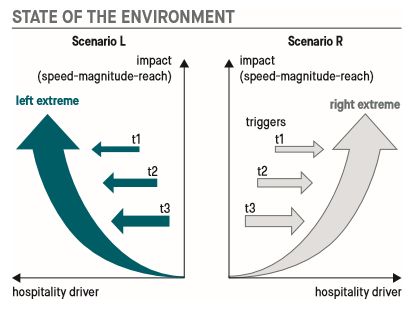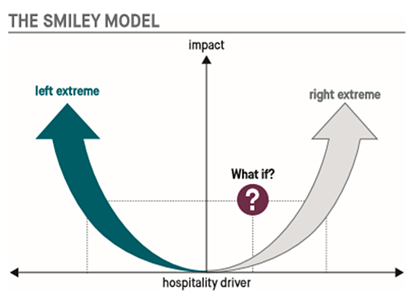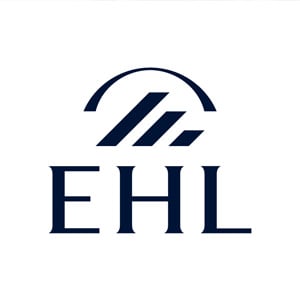The outbreak of the COVID-19 pandemic was unexpected and has severely affected society and the economy. With regard to the hospitality industry, in addition to the health hazards to guests and employees and concerns for the well-being of all, travel restrictions have hit the industry particularly hard worldwide.
However, this is not the first crisis to hit the hospitality industry and it will not be the last challenge that hospitality managers have to face. The EHL Lausanne Report provides a good basis for reflection in times of uncertainty. Learn more about the approach below.
What is the Lausanne Report and where does it come in when there is planning uncertainty?
The Lausanne Report uses 6 scenarios to illustrate what the hospitality industry will look like in 2030. Even before the COVID-19 crisis, it was clear to all experts that the hospitality industry would still have to undergo many changes by 2030. The Lausanne Report examined the levers and influencing factors that shape the world today and the long-term effects on the industry. Possible future scenarios were developed and interactions between global megatrends and trends in hospitality were revealed.
However, the main objective of the Lausanne Report is to stimulate a debate on risks and opportunities. This debate is highly topical right now. Especially in uncertain times such as the corona crisis, the EHL Lausanne Report can contribute to a better understanding of what to expect and help prepare for the future.
The methodology for decision making under uncertainty
For this purpose, a method was developed which is based on decision making under uncertainty and scenario planning. Possible future landscapes are explored in two divergent and antagonistic scenarios to the extreme:

The main triggers for each extreme were identified in the direction of the respective hospitality driver (horizontal axis). The impact of the scenarios such as speed, extent and reach is greatest at each extreme.
Under normal conditions, i.e. when no disturbances or so-called black swan events occur, many characteristics of both extreme scenarios are valid and can coexist. This situation is represented by the smiley model, which combines the two perspectives:

Furthermore, changes in the business environment are placed in the context of "what if" scenarios. The answer to this question defines the mix of constraints and options that hospitality managers must consider in order to determine the best possible strategy for the future when making decisions in times of uncertainty.
Future planning in case of uncertainty using the example of the COVID-19 pandemic
With the COVID-19 crisis we have unexpectedly entered a phase of uncertainty. Thesis 2 of the Lausanne Report, which highlights the Vulnerability on the Rise, has been fulfilled; this is a black swan event with consequences.
Using the methodology of the Lausanne Report, the EHL Swiss School of Tourism and Hospitality (SSTH) in Passugg analyzed which triggers and effects have an impact on hospitality education and, based on this, developed a future scenario for educational institutions following the COVID-19 crisis.
For more information, click here: Hospitality education after COVID-19.





